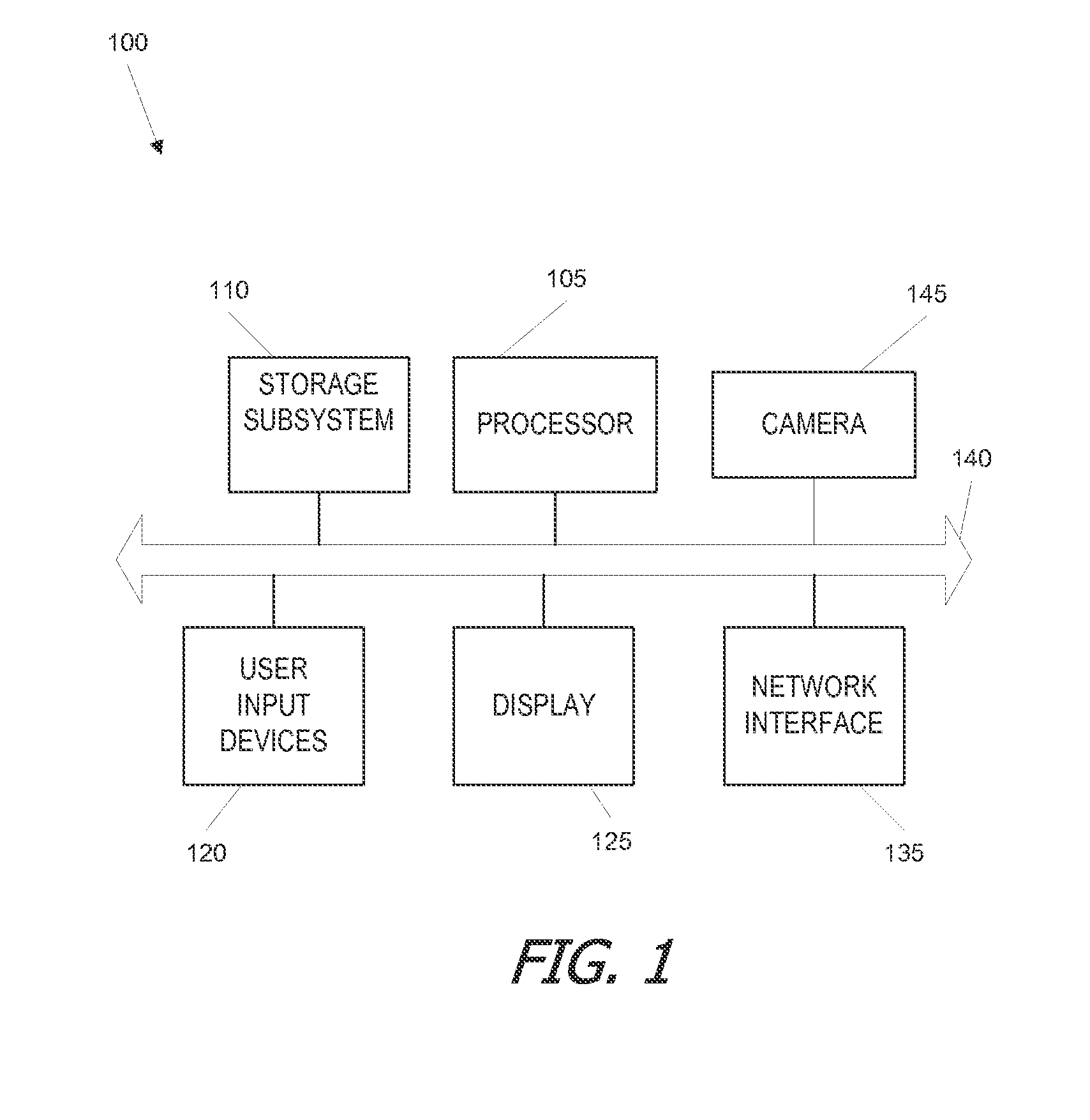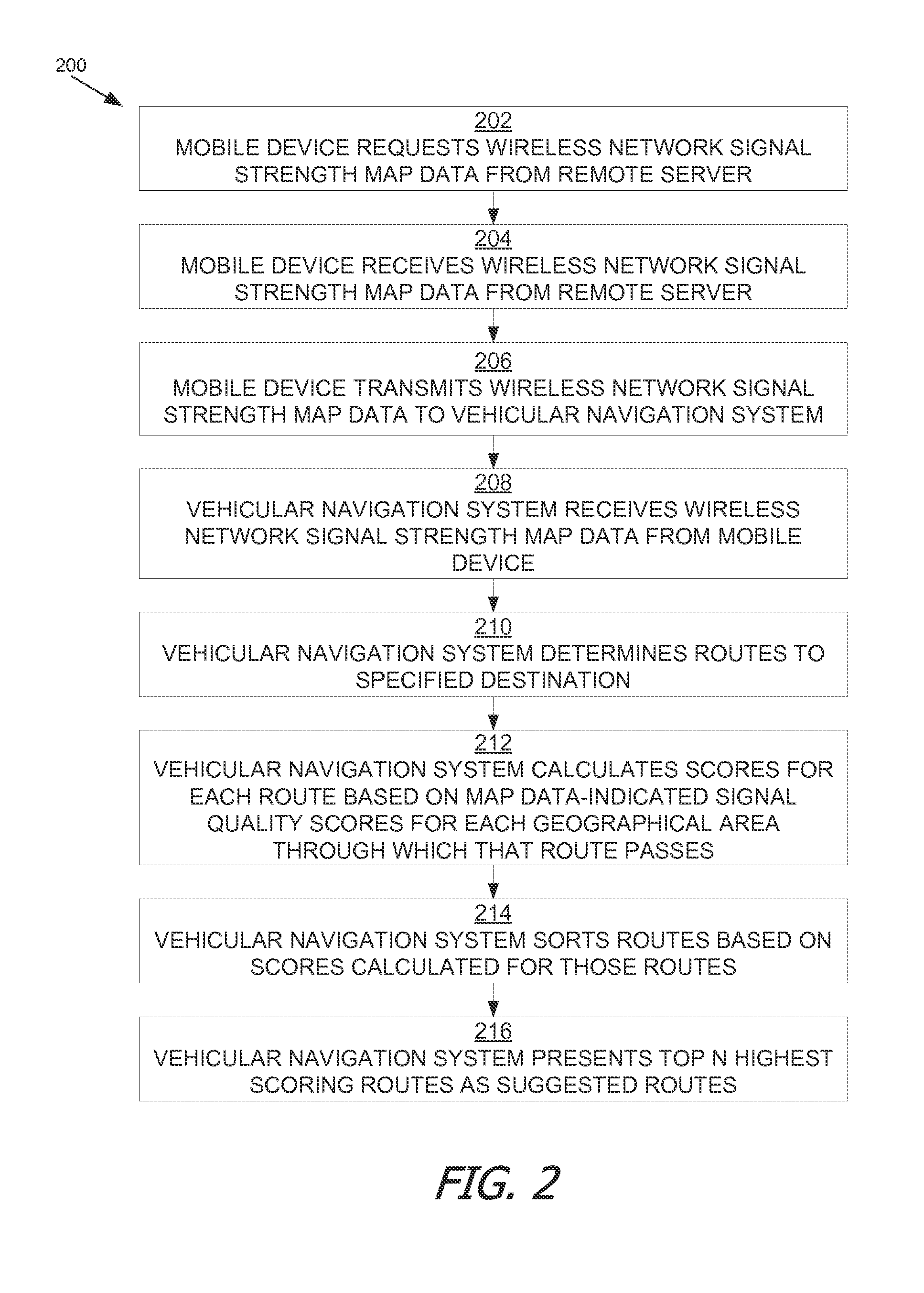Navigation System Acquisition and Use of Cellular Coverage Map Data
a mapping system and navigation system technology, applied in the field of mobile devices, can solve the problems of affecting the reception of wireless network signals by mobile devices,
- Summary
- Abstract
- Description
- Claims
- Application Information
AI Technical Summary
Benefits of technology
Problems solved by technology
Method used
Image
Examples
Embodiment Construction
[0011]FIG. 1 illustrates a computing system 100 according to an embodiment of the present invention. Computing system 100 can be implemented as any of various computing devices, including, e.g., a desktop or laptop computer, tablet computer, smart phone, personal data assistant (PDA), or any other type of computing device, not limited to any particular form factor. Computing system 100 can include processing unit(s) 105, storage subsystem 110, input devices 120, display 125, network interface 135, a camera 145, and bus 140. Computing system 100 can be an iPhone or an iPad.
[0012]Processing unit(s) 105 can include a single processor, which can have one or more cores, or multiple processors. In some embodiments, processing unit(s) 105 can include a general-purpose primary processor as well as one or more special-purpose co-processors such as graphics processors, digital signal processors, or the like. In some embodiments, some or all processing units 105 can be implemented using custom...
PUM
 Login to View More
Login to View More Abstract
Description
Claims
Application Information
 Login to View More
Login to View More - R&D
- Intellectual Property
- Life Sciences
- Materials
- Tech Scout
- Unparalleled Data Quality
- Higher Quality Content
- 60% Fewer Hallucinations
Browse by: Latest US Patents, China's latest patents, Technical Efficacy Thesaurus, Application Domain, Technology Topic, Popular Technical Reports.
© 2025 PatSnap. All rights reserved.Legal|Privacy policy|Modern Slavery Act Transparency Statement|Sitemap|About US| Contact US: help@patsnap.com



